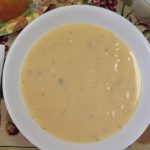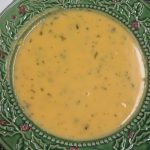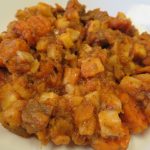May is National Strawberry Month, so I figured it was a good time to post a review of the Thrive Life freeze-dried strawberries my friend gave me.
Since some of my grandchildren that visit frequently had never eaten freeze-dried (FD) strawberries, I decided to include their reactions in my review. While they had never eaten FD strawberries, they had eaten the dehydrated strawberries I make.
My reaction:
They taste like crunchy strawberries that turn into powder.
They look like fresh strawberries coated with pink powder.
Their reaction:
“I bite and it turns to powder.”
“I don’t like the texture.”
“I like dried (dehydrated) strawberries better, unless I’m in the mood for popcorn.”
“They would be good with chocolate on them.”
In spite of their reaction, I hear that FD strawberries are a customer favorite.
One excellent characteristic of these strawberries is that 1/2 cup provides 40% of your daily recommended intake of Vitamin C. That could be very important if you have to depend on your food storage for any length of time.
The Thrive Life FD strawberries in the pouch have a 1-year optimal shelf life. The #10 can, however, has a 25-year shelf life.
If you live in a humid climate, be sure you keep the pouch tightly closed. FD foods are like sponges in humid climates.
After we tried these FD strawberries, the Home Storage Centers (HSC) of The Church of Jesus Christ of Latter-day Saints started selling #10 cans of FD strawberries. The shelf life is estimated to be 30 years when stored at 75oF or below. If you live in a humid climate, I recommend storing them in an airtight container after the can is open rather than in the can covered with a plastic lid. The lid is not air- or moisture-tight and the strawberries will start to get soft in about a week.
The label for the HSC FD strawberries indicates the level of Vitamin C to be 70%. I’d be interested to know why there is a difference in the two brands. The #10 can of Thrive Life says 60% so you’re getting somewhere between 40% and 70% of your daily Vitamin C.
Instructions are found on the back of the HSC FD strawberries for rehydrating them as well as on the #10 can of Thrive Life strawberries. They differ. I used the instructions from the HSC on some of the Thrive Life strawberries to see what happens (I hadn’t purchased any from the HSC yet). The instructions are to cover them with warm water and let them stand 5 to 10 minutes, stirring occasionally, then drain the extra water. (Thrive Life instructions are to add 1/4 cup water to 1 cup of strawberries and let sit.) They look and act and feel like cooked strawberries, but they are not mushy. They would work in Jello, between cake layers, made into ice cream topping, put in smoothies, or dropped into lemonade. It’s an option to consider.
There are a lot of recipes online now that use FD strawberry powder. You put the FD strawberries in a blender and blend until all that’s left is powder. The powder is then used to flavor cakes, frostings, cookies, brownies, and other baked goods. FD strawberries are also good in a snack mix with dark chocolate. Look for that recipe to come in the next month.
If you are interested in any Thrive Life products or have any questions, please contact my friend Linda on her website.










